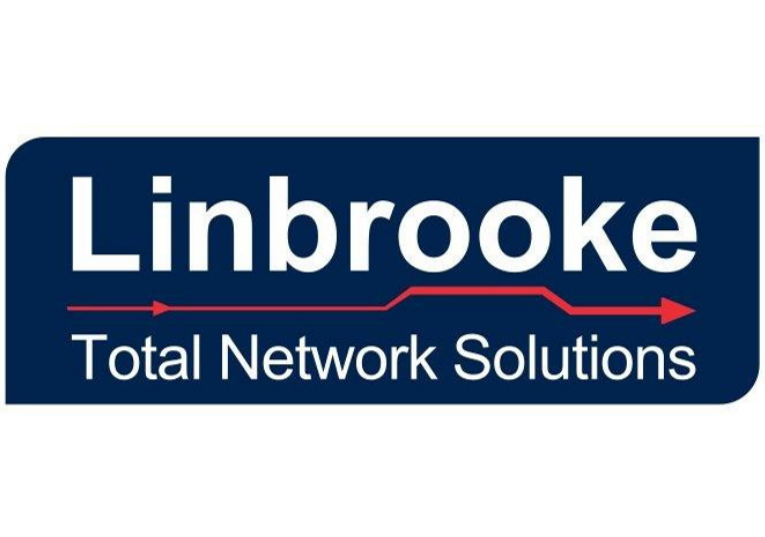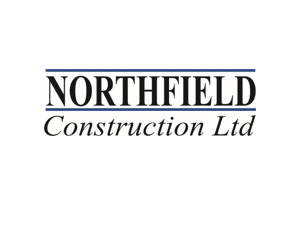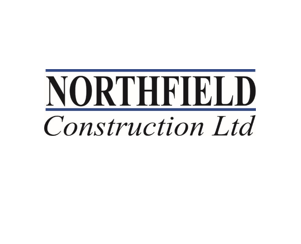Title Page
-
Document No.
-
Audit Title
-
Client / Site
-
Conducted on
-
Prepared by
-
Location
-
Personnel
1.0 Site Documentation
-
1.1 Safe System of Work pack, including:<br>- Front Sheet?<br>- Appendix C?<br>- RT9909, RT3181, PICOP pack?<br>- Sectional Appendix, signalling diagrams, hazard directory, briefing appendix & mileage conversion chart?
-
1.2 Risk Assessments, including point of work assessments?
-
1.3 Work Package Plan? Task Briefing Sheet? Detailed Design?
-
1.4 Inductions?
-
1.5 Permits - to dig, confined (including ALO plans) etc?
-
1.6 Documents<br>(Project documents, methodologies, form templates, F10/HSE poster/policies/insurance cert, first aiders, emergency arrangements form)?
2.0 Personal Protective Equipment (PPE)
-
2.1 Head, hands, eyes, feet, ears, respiratory & skin?
-
2.2 Suitability to task & risks? In good condition?
3.0 Equipment
-
3.1 First aid kits & firefighting equipment: Contents in date and sufficiently supplied)?
-
3.2 Tools & Equipment: condition maintenance & calibration?
-
3.3 Is the equipment suitable for the task and complete (e.g CAT scanner with generator, Stihl Saw with dust suppression & appropriate PPE for leg, eye, respiratory and hearing protection with HAV controls implemented)?
-
3.4 Is the work site free from knives, Stanley knives and unsafe blades?
4.0 Ladders & Height
-
4.1 Are ladders secured correctly? Are ladders in good repair? Ladder tags?
-
4.2 Are height risk assessments, control measures and competencies appropriate for the location & task?
-
4.3 Is access equipment appropriate for the location & task?
5.0 Buried Services
-
5.1 Has the permit system been completed correctly?
-
5.2 Have buried services been identified and marked out?
-
5.3 Are the CAT operators scanning & search techniques correct?
6.0 Manual Handling
-
6.1 Assessments & control measures?
-
6.2 Have staff been briefed on the control measures i.e safe lifting techniques, mechanical lifts etc.?
7.0 Housekeeping
-
7.1 Is the site, its access and egress, routes and work areas free from hazards & risks?
-
7.2 Is the site tidy and free from rubbish and unrequired materials?
-
7.3 Has all the waste been correctly segregated and placed in appropriate labelled skips?
8.0 Competence
-
8.1 Are Linbrooke's ID cards, project ID cards and/or helmet induction stickers available?
-
8.2 Do competencies match the tasks being undertaken? Note. Competence: training, experience, knowledge & skill.
-
8.3 Is mentoring or monitoring in place as necessary?
-
8.4 Are personal folios in place and up to date? Is there evidence of management reviews of the folios?
9.0 Security
-
9.1 Does the site have appropriate control measures to prevent theft, vandalism or arson?
-
9.2 Do the teams know what to do when spotting a trespasser? Has the trespass been an issue?
10.0 Welfare
-
10.1 Are there welfare facilities on site? If yes, are the facilities compliant with the projects welfare risk assessment, EMP and CDM2015?
-
10.2 Are the facilities clean, tidy, serviceable and emptied on a regular basis?
11.0 Environmental
-
11.1 Are the team aware of the projects environmental targets and aspects & impacts?
-
11.2 Are the team aware of their routine environmental control measures & emergency measures?
-
11.3 Were there any hazardous substances in use, have they been stored and labelled appropriately?
12.0 Occupational Health & Hazardous Substances
-
12.1 Are COSHH items & other hazards being adequately controlled (asbestos, silica, dust, exhaust fumes etc.)?
-
12.2 Are noise hazards being effectively controlled?
-
12.3 Are vibration hazards being effectively controlled?
-
12.4 Are fatigue mitigation plans & measures sufficient?
-
12.5 Are biological hazards being effectively controlled?
-
12.6 Are there any signs of stress or unreasonable expectations?
13.0 Vehicles
-
13.1 Clean & tidy? Correctly loaded & within weight capacity limits?
-
13.2 Serviceable? (Tyre's, oil levels, washer fluid, lights, mirrors, signs of unreported damage)?
-
13.3 Parked sensibly without causing risk?
14.0 Fire
-
14.1 Is there evidence of a fire risk assessment?
-
14.2 Is there a fire plan and are fire precautions in place & briefed (as applicable to location/task)?
-
14.3 Are there appointed persons or competent fire wardens (as applicable to the site)?
-
14.4 For yards, is there a fire plan and designated fire assembly point?
-
14.5 Are fire prevention measures and hot work permit system sufficient?
15.0 Other
-
15.1 Are employees aware of the accident, incident, close call and near miss reporting procedure?
-
15.2 Have site safety & quality inspections been completed by project staff?
-
15.3 Have the projects operational leaders recently taken part in the OLM?
16. % Safe Questions. The inspector is to decide answers to the following 10 questions. The questions are then to be used to fuel a safety discussion. Subsequent findings are to be recorded in Section 17.
-
16.1 Can workers explain details of their task and risk controls briefed during their task briefing?
-
16.2 Are methodologies, control measures and safe practices being followed?
-
16.3 Can the workers explain details of their safe system of work?
-
16.4 Do the workers know the lifesaving rules?
-
16.5 Do the workers know the work-safe procedure?
-
16.6 Can the workers give details of the last safety brief (tool box talk)?
-
16.7 Have all noticeable close calls been reported by the team?
-
16.8 Has the team recently received a debrief from their supervisor and was the debrief sent to HSEQ?
-
16.9 Did the workers engage in open, honest discussion regarding performance and HSEQ matters?
-
16.10 Are the workers aware of their environmental risks and controls?
17.0 Feedback
-
17
18. Information & Guidance
-
18.1 Completing your Inspection
1. Conduct your inspection
2. Complete the percent safe questions
3. Conduct a safety discussion and inspection debrief with the team.
4. Return the completed form to HSEQ -
18.2 Completing the checklists
When working through the checklists on pages 1 & 2, as applicable, satisfy yourself that each item is:
1. Present. 2. In date. 3. Completed Correctly. 4. Within calibration or inspection timelines. 5. Serviceable. 6. Relevant/specific to the work. 7. Sufficient to cover hazards & mitigate risks. 8. Briefed to all personnel. 9. Being adhered to. 10. With sufficient evidence & records in place.
Look for & record good practices too. -
18.3 Percent Safe Questions
There are 10 questions, each earns 10 points. All questions are applicable to any site and must be asked. Each question be answered with a 'yes' or 'no'. A 'yes' answer earns points, 'no' answers do not. -
18.4 Safety Discussion
Watch & listen during your inspection, then lead a safety discussion with the team as part of your debrief to the team. In the discussion, you should ask questions which lead the team to explain & acknowledge their own strengths & weaknesses without having to tell them. Use anything you saw at the site to help fuel the conversation. Your questions should be aimed at:
- Gaining assurance of the workers level of competence & quality of work
- Educating & motivating by providing information, briefs and updates.
- Delving in to general project performance and gaining opportunities for feedback or consultation regarding occupation health, safety, wellbeing & sustainability to the environment. Also consider: programme time or finance constraints, the plan, personnel, materials, plant, equipment, designs, client & third party interactions etc.
The percent safe questions will give a good starting point for sparking a safety discussion. You will know why you have the scored the team negatively, ask them to score themselves too and discuss their reasoning.
Ensure you record your safety conversation in the notes section and add any lessons learnt. -
18.5 Site Debrief of Findings (the inspectors inspection debrief to the team. There may be comments the inspector may wish to raise which are suitable for sending via the debriefing QR application too).
The team must be debriefed on your findings, this must include positives, negatives and any advice you may provide. -
18.6 Returning your completed inspection report
The auditor is to ensure that their safety inspection report is returned to HSEQ for recording & analysis (hard copy or scans/photos via hseq@linbrooke.co.uk -
18.7 Operational leaders meeting (OLM)
The OLM is held each Friday at 9:00am. Join by dialing: 020 3137 2688 & enter conference ID: 89 21 66 86 -
18.8 Confidential Reporting
1. In both QR codes, for close calls and debriefing, it is possible to raise your concerns without disclosing your identity.
2. Alternatively, you can confidentially discuss your concerns with the HSEQ Manager via 0788 393598. -
18.9 Close calls & debriefs
Following your site inspections, any close calls and debriefs should be shared via the QR codes. -
Where any non conformance's been found during this inspection? (If yes, please provide details of how the actions have been resolved on site)
-
Auditor/Inspectors Signature:
-
Auditee's Signature:










